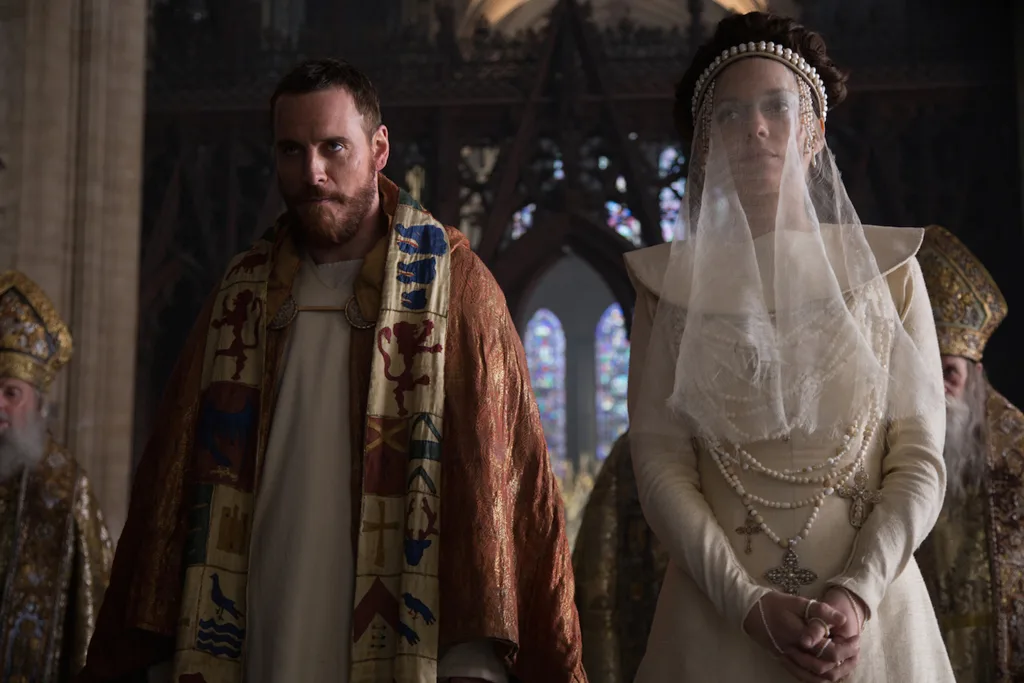Jacqueline Durran is an Academy Award-winning costume designer with such credits as Anna Karenina, Pride & Prejudice, and Atonement. Her latest project, Macbeth with Michael Fassbender and Marion Cotillard, is already receiving major acclaim, having premiered throughout Europe earlier this Fall. In time for the American opening this week, we asked Durran to talk us through her inspiration and process of designing the richly detailed costumes for this powerful tragedy.
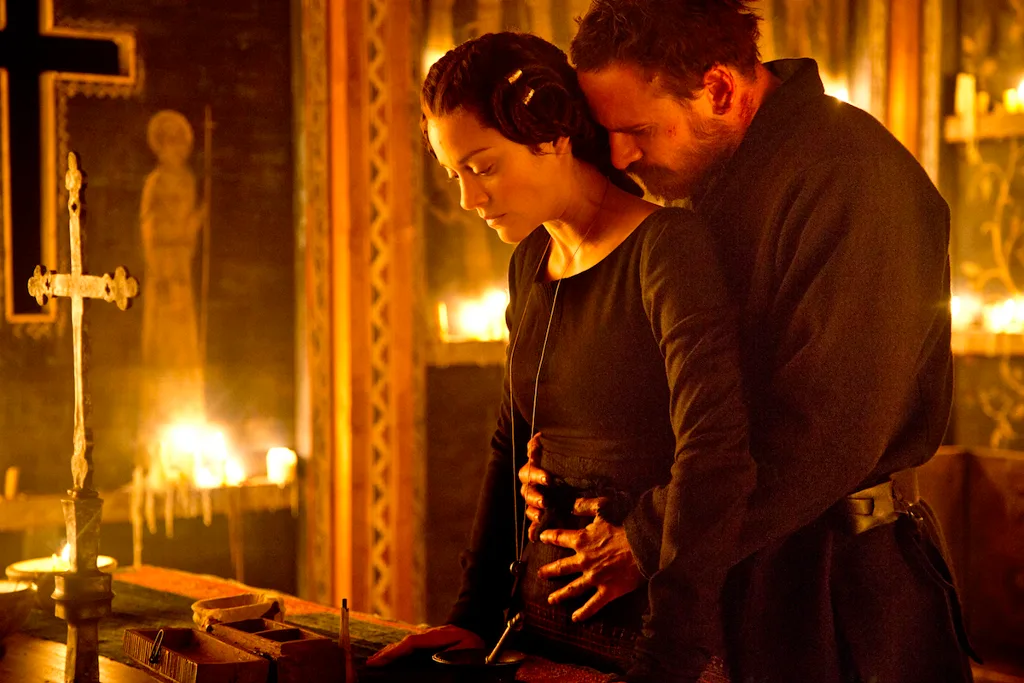
Tyranny Of Style: Can you start by telling us about your initial inspiration for Macbeth?
Jacqueline Durran: “There were a couple of starting ideas for Macbeth. The director thought of it in terms of a Western and I thought of it as an outlying land in the eleventh century. The two ideas aren’t at odds with each other, so my aim was to find a way of representing the two themes. I felt that to a large extent the 11th Century was an imaginary place as what survives as reference is very stylized. Taking the idea that it was a place on the edge of the known world, I looked for the simplest archetypal forms of clothing and sought a way to represent the rules of that frontier society in a very basic way. I used the bible of ancient clothing styles, namely Tilke, which reveals the similarity of basic shapes of ancient clothing around the world and cherry picked different styles to create our world. The palette of the film moved very simply from shades of grey and black at the beginning to shades of white for Dunsinane. The fact that each character had almost no changes of clothes was something that I think fits into the idea of a Western – people without a wardrobe of clothing choices.”
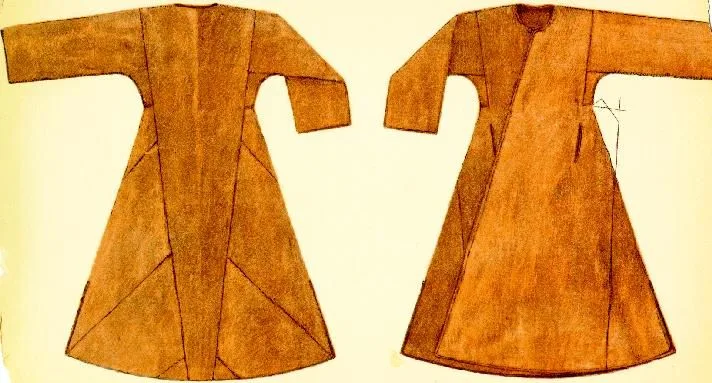
Example of Costume and Pattern research images created by Max Tilke.
T/S: The witches are such a pivotal element of staged productions of Macbeth. Can you talk to us about their role in this filmed production and your inspiration behind their design?
JD: “The inspiration for the witches costumes came from the idea that they were a nomadic group that came from the north – i.e. even more northern European than Scotland. An ancient race that fitted that description was the Sami people of northern Scandinavia and we looked at their traditional costume for inspiration. There was a note from Justin the director that the costumes should have a lot of bells incorporated into them, as he wanted to use the noise of the bells thematically for the witches. We started off with many bells but cut down the number in the course of the fittings – although we still spent a lot of time ensuring that they were all deadened for the sound department.”
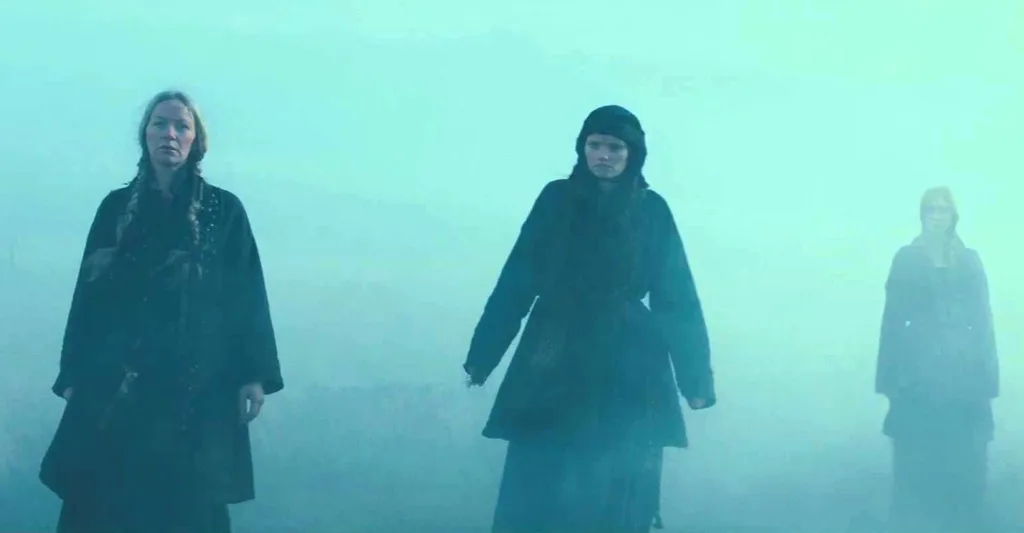
Macbeth – Costume design by Jacqueline Durran.
T/S: Can you talk to us about the materials and inspiration behind the battle costumes?
JD: “Macbeth’s battle look was made from leather, hemp and wool. They were the elements that we felt would be available in their primitive environment. The idea of the strips of leather mounted onto hemp to create a form of armour was inspired by samurai costume. Each of the Thanes had a particular crest, which they wore in the style of a sash to show their status. The crest was a symbol, which was inspired by traditional Scottish heraldry. The sash worn by the king represented the summation of all of the clans, so depicted each of the Thanes’ crests in addition the Scottish lion and the Christian cross. Each soldier had a coin of allegiance to the king around his neck and when one of Macbeth’s soldiers died he took the coin from their neck and added it to his sash as a remembrance of each man fallen. Everything for the principal characters was made for the movie. We hired some crowd costumes, although we also made a large number of those too as it was quite difficult to find clothes as simple as the ones that we wanted to use as the soldiers under layers.”
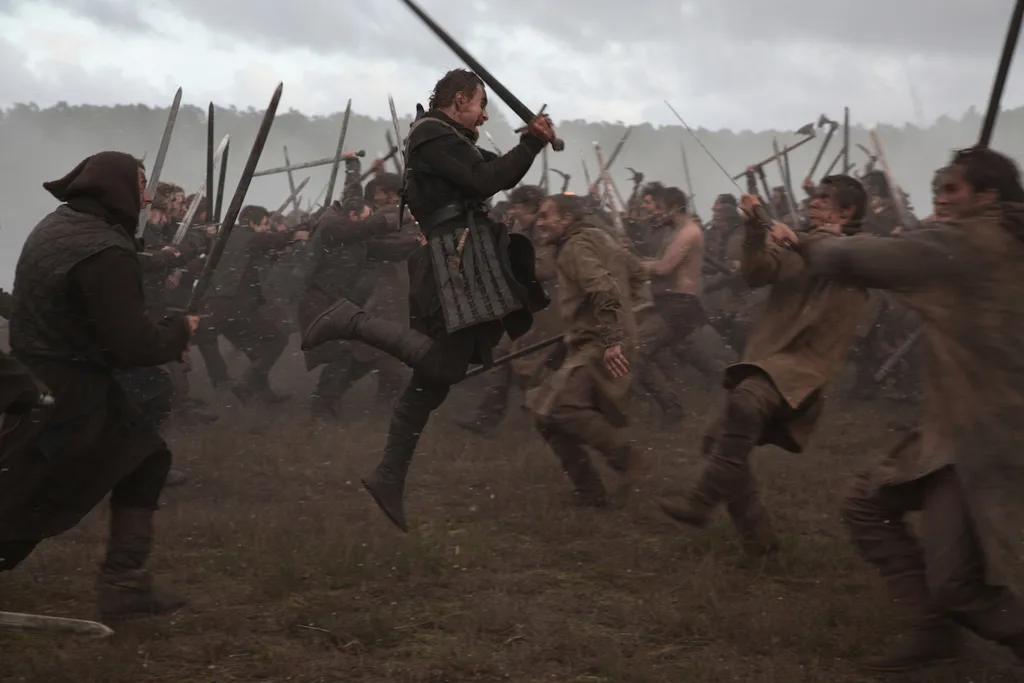
Macbeth – Costume design by Jacqueline Durran.
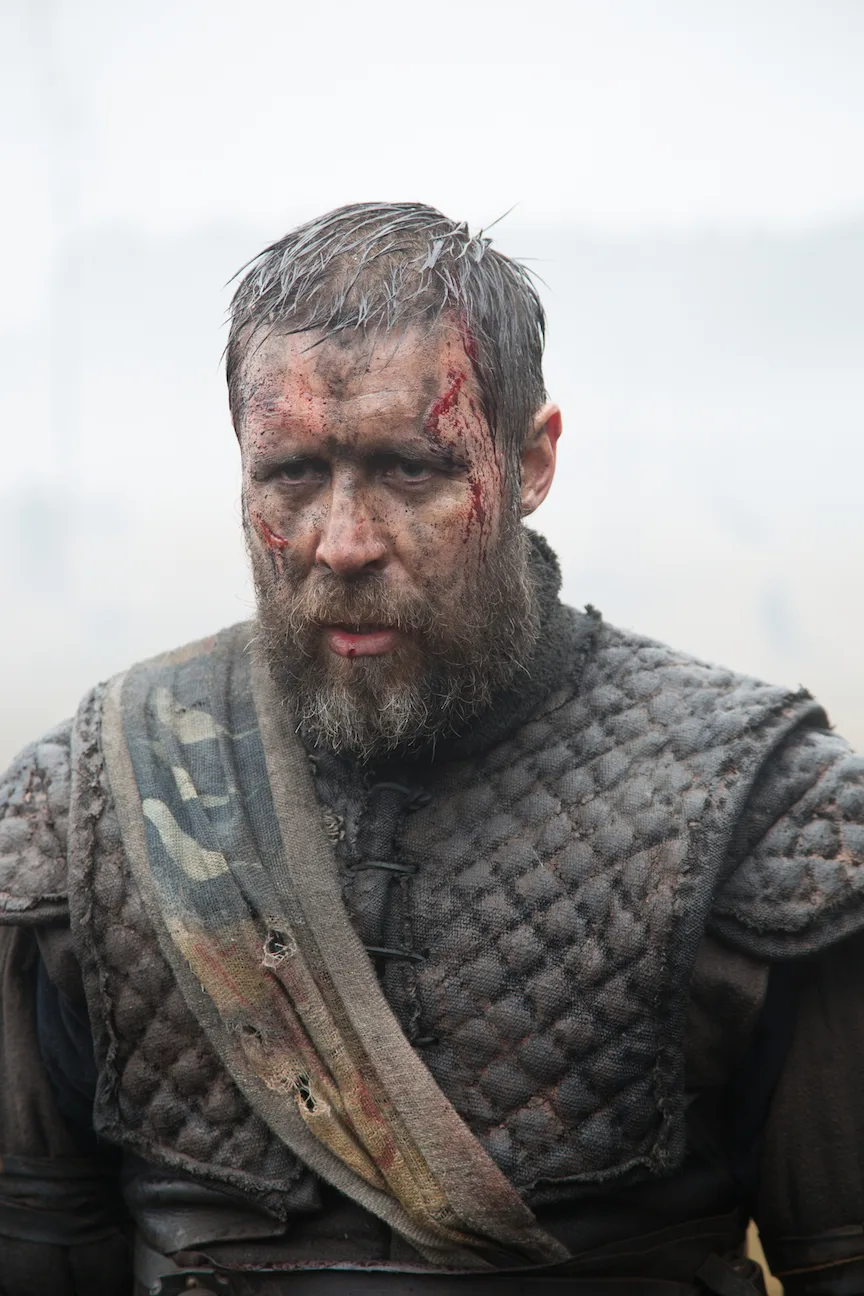
Macbeth – Costume design by Jacqueline Durran.
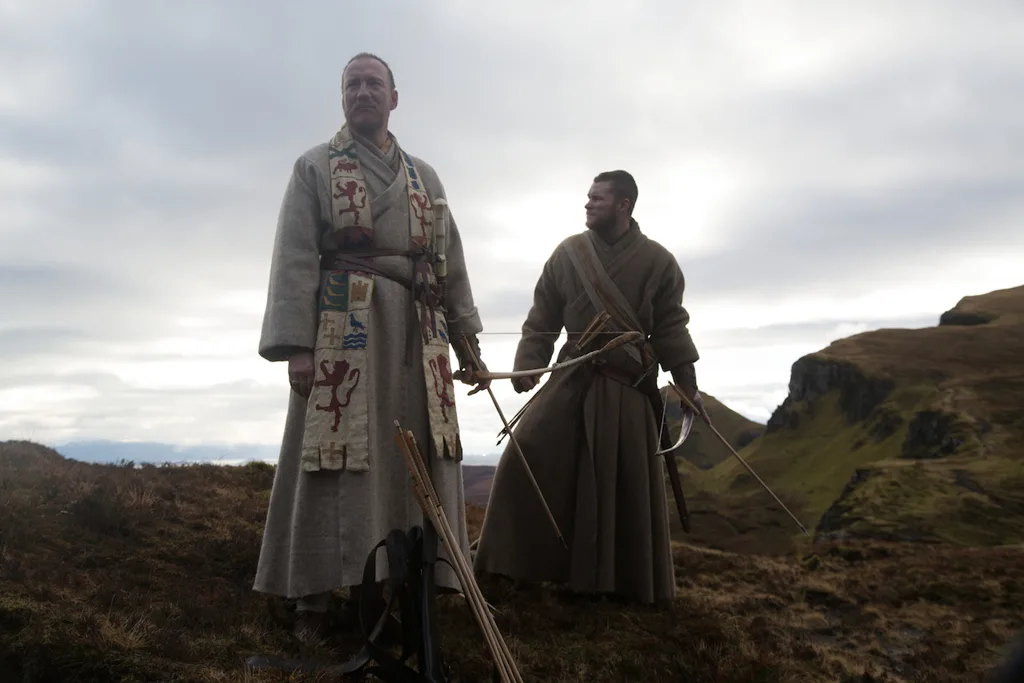
Macbeth – Costume design by Jacqueline Durran.
T/S: Can you tell us about how you represented Macbeth’s personal character arc through costume?
JD: “When not in armour he wore the basic wool tunic, trousers and cape that we established as the ancient style of our world. Once he had killed Duncan and appropriated the style of the king, the colour changed from black to white. The royal household had been established in light colour clothing and Macbeth and Lady Macbeth were dressed in the same light colour once they arrived in Dunsinane. We referred to archeological sources and recreated to the best of our ability a Viking shirt referred to as the Viborg shirt. It is a more complex and sophisticated piece of clothing and represented a change of status. Duncan was killed in that style of shirt and Macbeth began to wear a shirt of the same style once in Dunsinane. The idea for the coronation was that it happened very quickly and that Macbeth almost stepped straight into Duncans clothes using the royal sash and cloak that we had seen Duncan wearing. From the coronation until we see Macbeth back in his fighting clothes the costume story is one of disintegration.”
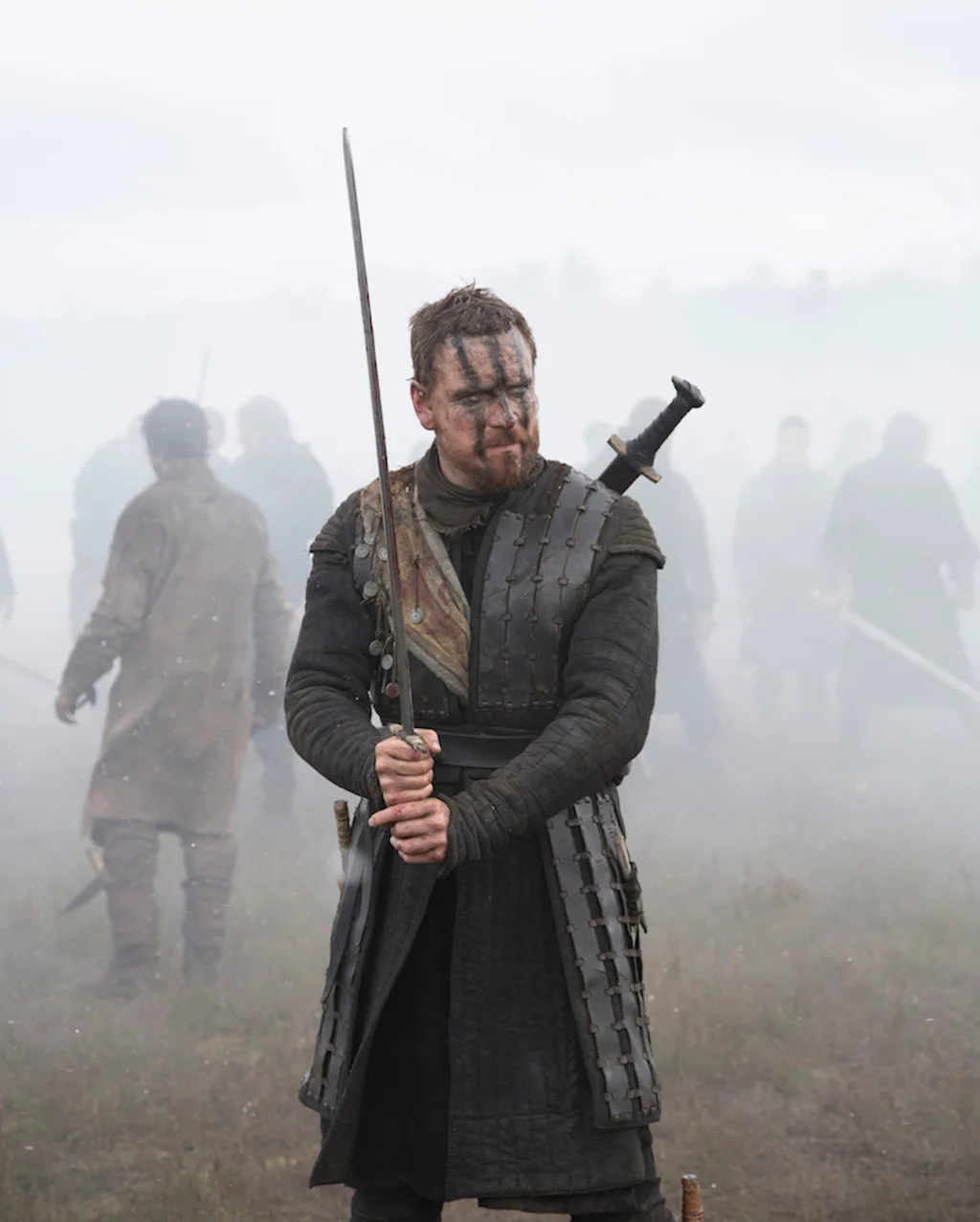
Macbeth – Costume design by Jacqueline Durran.
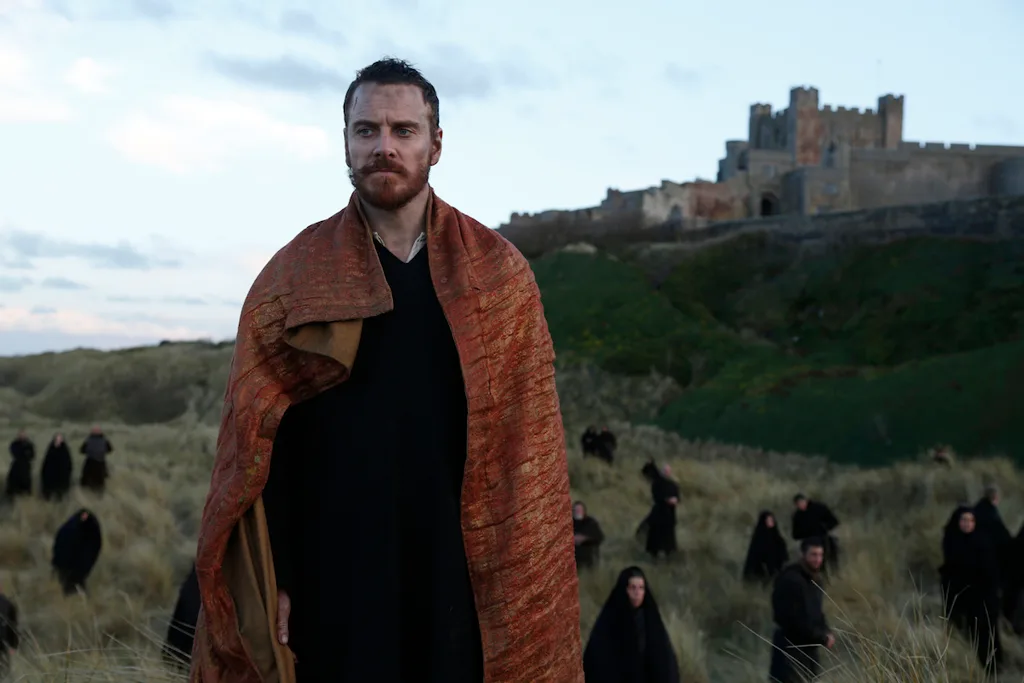
Macbeth – Costume design by Jacqueline Durran.

Macbeth – Costume design by Jacqueline Durran.
T/S: Lady Macbeth’s arc is so beautifully represented through costume. Can you tell us about your inspiration and design process for her?
JD: “The story arc for Lady Macbeth is similar to Macbeth’s in that the largest transition is from village costume in black to royal costume in shades of white. We wanted to underline the wildness of the environment by keeping the clothes very rough and simple with a hand-woven texture. Her village dress was actually made of hand-woven nettle fabric, which seemed symbolically correct.
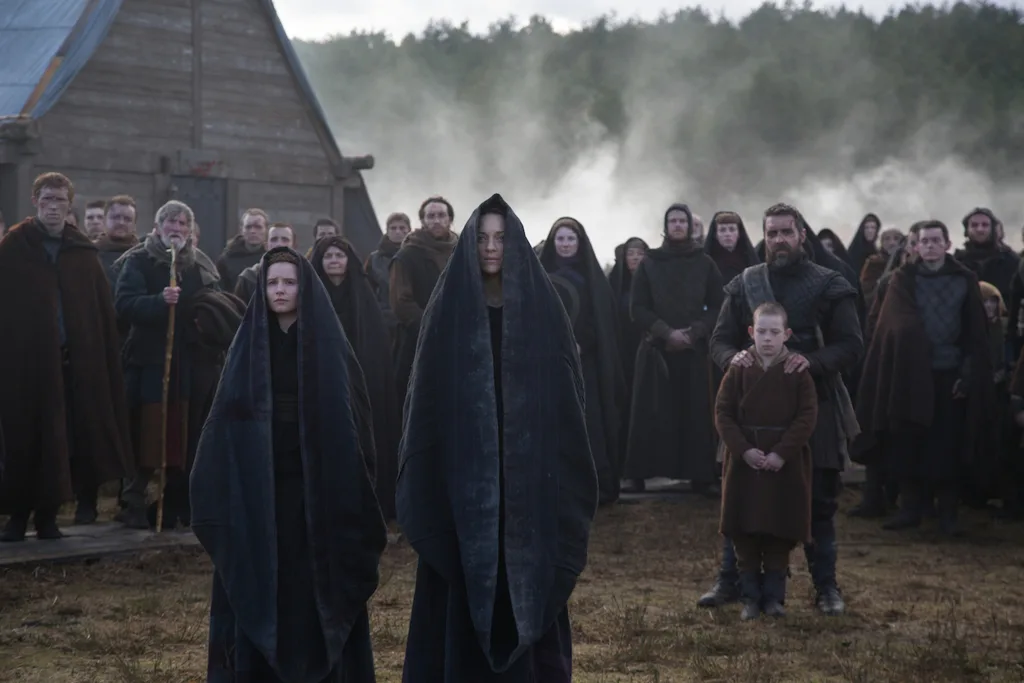
Macbeth – Costume design by Jacqueline Durran.
Even with her coronation costume we wanted to continue the hand-woven aesthetic, which would after all have been factually accurate. The veil was made of a hand-woven silk with obvious slubs in it and the style was taken from a Middle-Eastern wedding veil. The idea of the adornment on the front of the dress was taken from many styles of ethnic costume. The pearls fit into the white palette and the use of crosses referenced the underlying religious theme that we had observed with Lady Macbeth since the opening of the film, and of course the idea of the combination of God and royalty as seen with the use of the cross on Duncan’s royal sash.
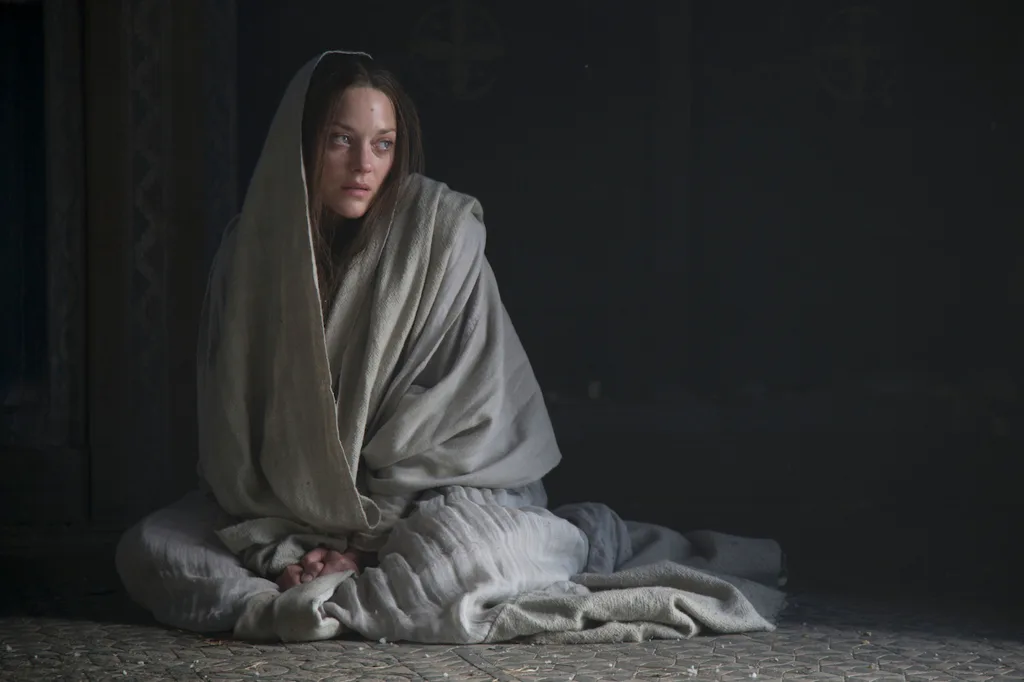
Macbeth – Costume design by Jacqueline Durran.
The shape of the dress arose from a combination of the shape of dresses observed in 11th century brass engravings and the idea of the simple skills that were available in the frontier environment. I decided on the use of cartridge pleats as decoration and very simple embroidery. The idea of the full skirted back to the dress also maintains a stylistic relation to the village dresses, which also had volume at the back so that they could be raised over the head. Cartridge pleats were also used extensively on both of Lady Macbeth’s village dresses, although I think it is a challenge to see them!”
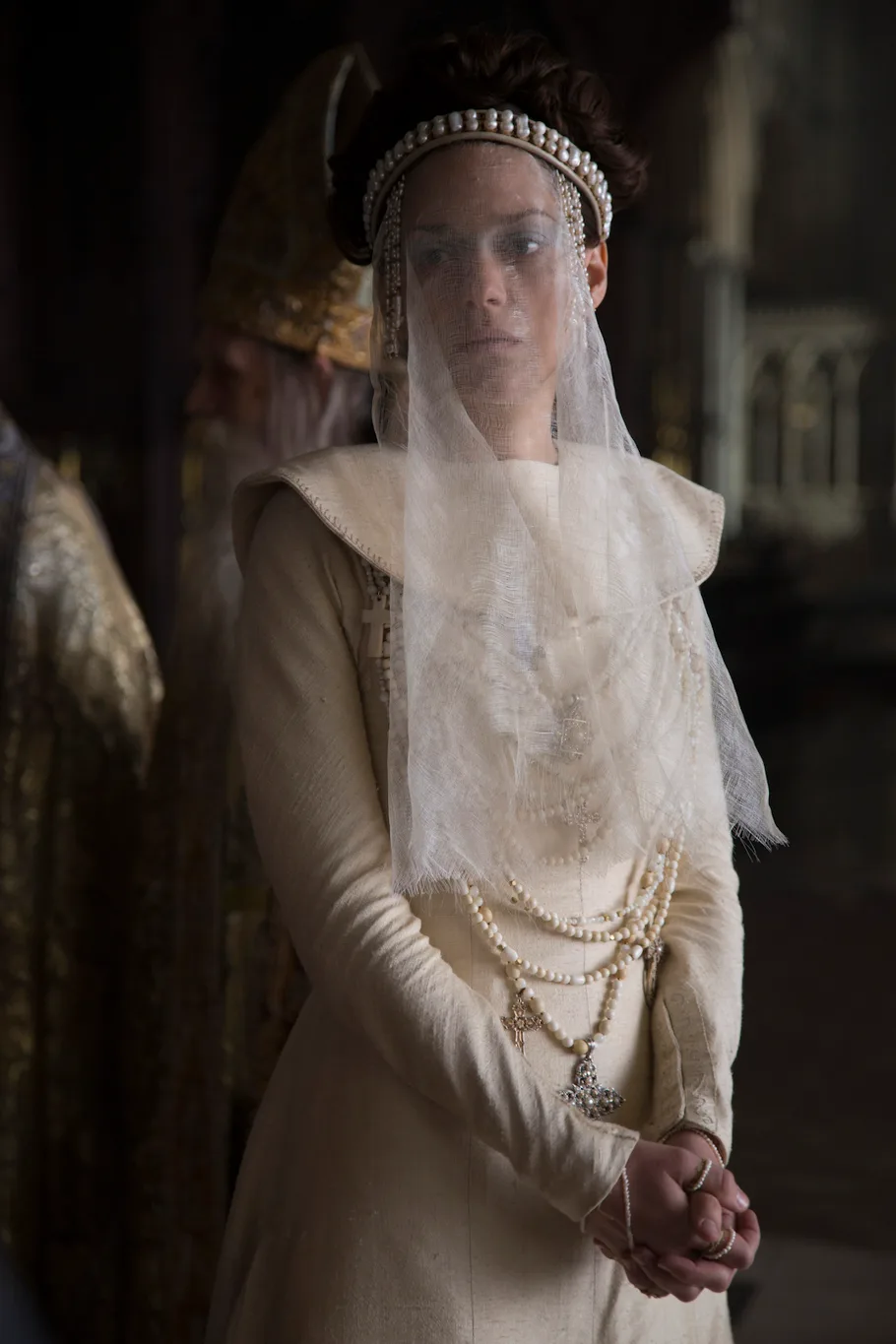
Macbeth – Costume design by Jacqueline Durran.
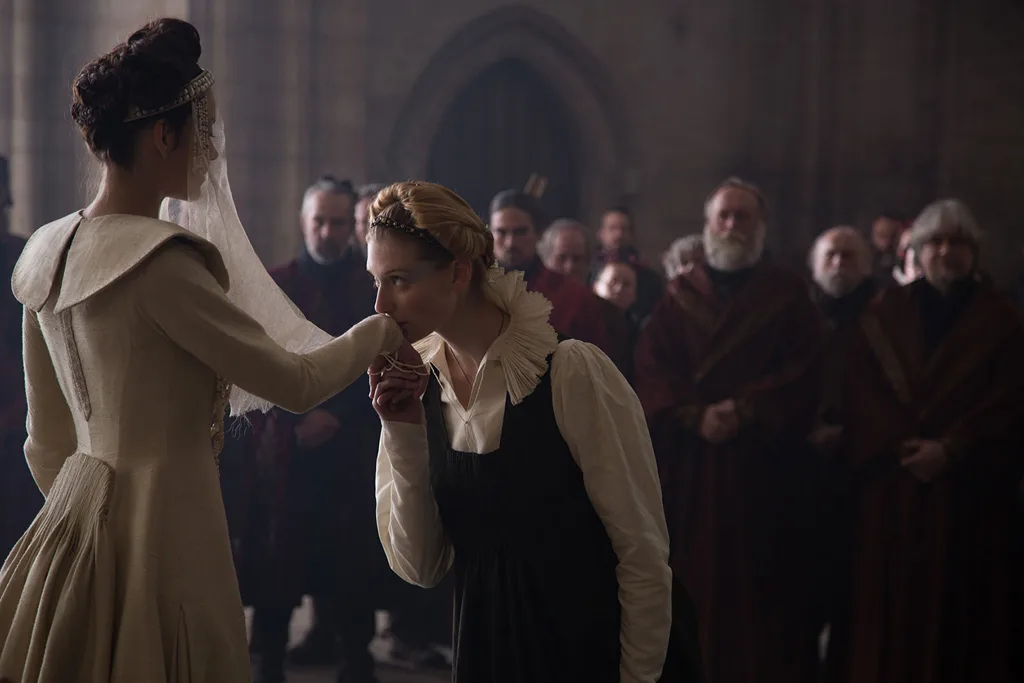
Macbeth – Costume design by Jacqueline Durran.
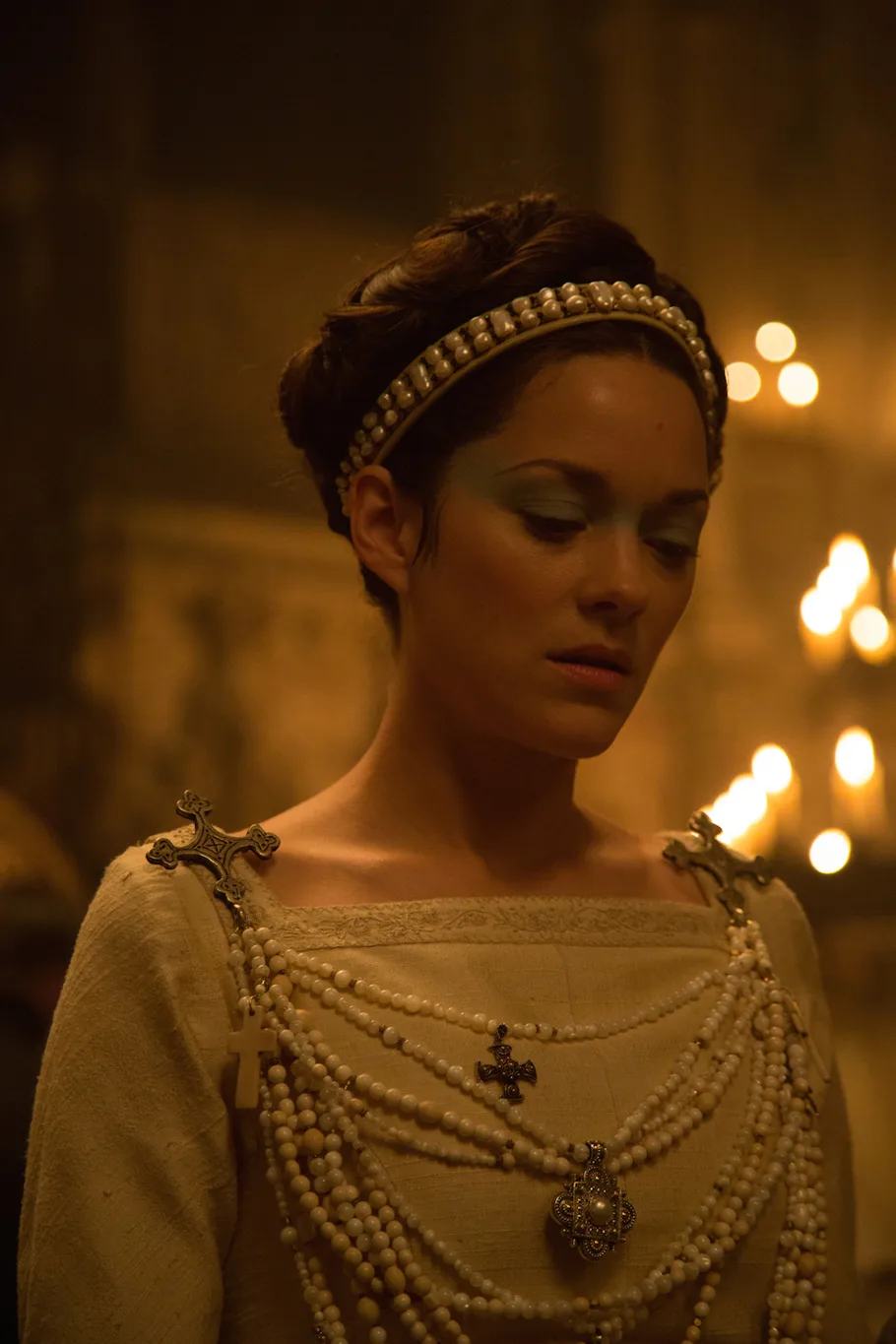
Macbeth – Costume design by Jacqueline Durran.
A huge thanks to Jacqueline Durran for sharing her design process with us!
Make sure to check out Macbeth, in theaters in the United States on December 4th, 2015.

